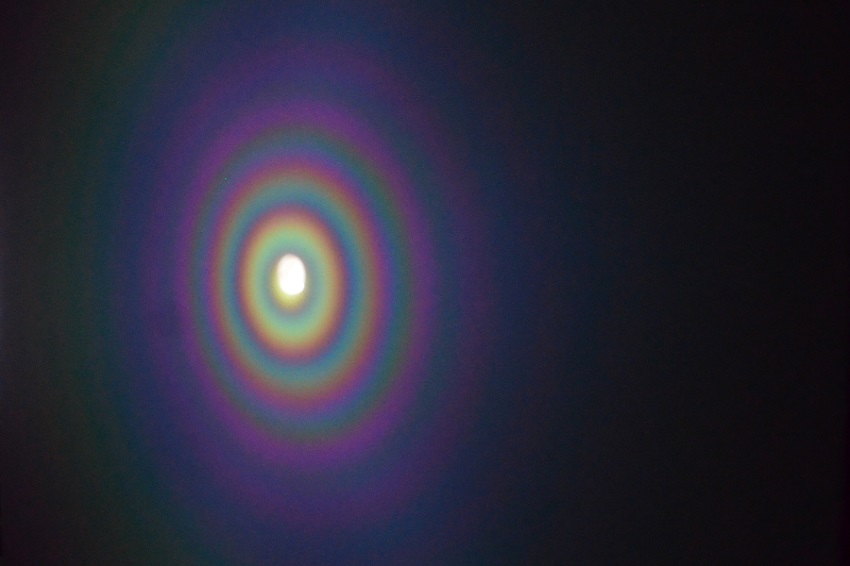
Retroreflective Material Could Help Autonomous Vehicles to Read Traffic Signs
Research at the University at Buffalo has explored the science behind microscale concave interfaces (MCI) — structures that reflect light to produce beautiful and potentially useful optical phenomena. In a published paper, Buffalo engineering researcher Qiaoqiang Gan defined how light interacts with microscale concave interfaces. Future applications for the technology, he said, could include aiding autonomous vehicles in recognizing traffic signs.
The study focused on a retroreflective material — a thin film that consists of polymer microspheres laid down on the sticky side of a transparent tape. The microspheres are partially embedded in tape, and the parts that protrude form MCIs.

Concentric rainbows are produced when white light is reflected by microscale concave interfaces. Courtesy of Jacob Rada, University at Buffalo.
When white light is shined on the film, it’s reflected in such a way that causes the light to create concentric rainbow rings, the team said. Alternatively, a single colored laser will generate a pattern of bright and dark rings. Reflections from infrared lasers also produced distinctive signals consisting of concentric rings.
To test the technology, the team applied the thin film to a stop sign. The patterns formed by the material showed up clearly on both a visual camera that detects visible light and a lidar camera that detects infrared signals, Jacob Rada, co-first author and a Ph.D. student at the University at Buffalo, said.
“Currently, autopilot systems face many challenges in recognizing traffic signs, especially in real-world conditions,” Gan said. “Smart traffic signs made from our material could provide more signals for future systems that use lidar and visible pattern recognition together to identify important traffic signs. This may be helpful to improve the traffic safety for autonomous cars.”

Visible (left) and infrared (right) images of a sign created using microscale concave interfaces to form the word STOP and other elements. The infrared image was taken using a lidar camera. Courtesy of Jacob Rada, University at Buffalo.
The team demonstrated a combined strategy to enhance the lidar signal and visible pattern recognition currently performed by both visible and infrared cameras, Rada said. “Our work showed that the MCI is an ideal target for lidar cameras, due to the constantly strong signals that are produced.”
A U.S. patent for the material has been issued, as has a counterpart in China, with Fudan University and the University at Buffalo as patent holders.
According to Gan, future plans include testing the film using different wavelengths of light and different materials for the microspheres, with the goal of enhancing performance for possible applications such as traffic signs designed for future autonomous systems.
The research was conducted by the University at Buffalo, the University of Shanghai for Science and Technology, Fudan University, Texas Tech University, and Hubei University. The work was partially funded by a grant from the U.S. National Science Foundation.
The research was published in Applied Materials Today (www.doi.org/10.1016/j.apmt.2021.101146).
Published: September 2021